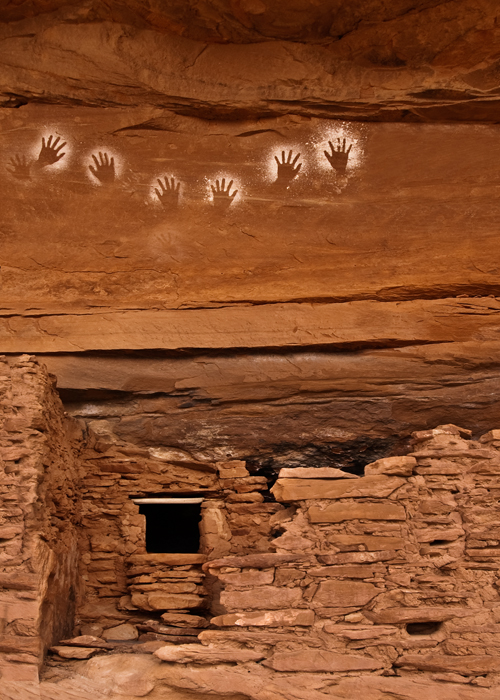
| Entry Page | About this Website | Haibun, Acknowledgments, Credits | Index: Haibun + Images | Ray Rasmussen's Homepage | Next Page -> |
Day's End Oceans once filled this arid land and then receded, leaving layers of sand that hardened into stone. Rivers carved deep canyons and rich soils accumulated in the bottom lands. Humans arrived and built shelters that were used for generations. And then came a 100-year drought. A waning moon is just peaking over distant cliffs. My tent sits where the Old Ones grew corn, squash and beans. Their stone shelters, empty but for the occasional pack rat or black widow, look as if they were built yesterday. Handprints made by pressing white mud on the red sandstone wall, float like ghosts above the entryways – a reminder that they were here, that this was their homeplace. Pottery shards and corn cobs are scattered about in the parched soil. Here and there, while wandering these meandering canyons and dry water courses, I find springs and potholes filled with rainwater – too little to have nourished the Old Ones. I've brought food, water and shelter with me. All this sufficient to sustain one man. winter wind Notes: The title and phrase “good fortune, and for what," and the idea for this haibun are taken from David Young’s translation of “Day’s End,” a poem by Tu Fu (712–770) a Chinese poet of the Tang Dynasty. Published in Modern Haibun and Tanka Prose #2, January 2009. Image: Mule Canyon Ruins and Handprints, Cedar Mesa, Utah |
